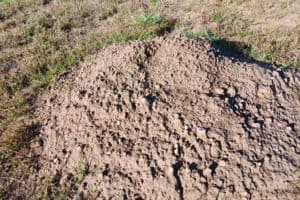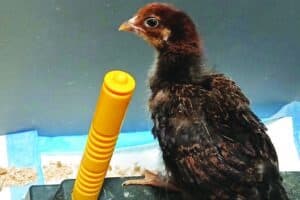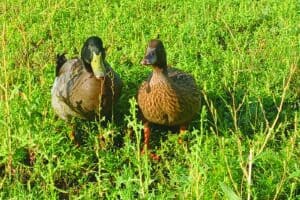Longtime local journalist Bill Radford and his wife, Margaret, live on 5 acres in the Falcon area with chickens, rabbits, dogs, cats, two noisy parrots, goats and two horses. Contact Bill at billradford3@gmail.com.
There was a deep freeze last October, one that came with a dramatic temperature shift from summer-like warmth to bitter winter cold.That was followed by a dry spell in the winter months, with little relief in the spring; there was no springtime storm blanketing the area with deep snow.And in mid-April, there was another deep freeze, again accompanied by a huge shift in temperatures.It’s all been too much for some of the trees in the area. The October freeze came at a particularly unfortunate time, a period when trees were preparing for winter in a process called “hardening off.” As Timberline Landscaping explains on its website, with a gradual drop in temperatures, the trees “toughen up and naturally protect their tissue as winter approaches.” The trees brutalized by the October cold didn’t get a chance to do that.The April freeze also came at a bad time and was particularly devastating to Palisade peach farmers on the Western Slope; Gov. Jared Polis requested a USDA disaster declaration to get federal help for affected Western Slope counties. But the plunge in temperatures took its toll on trees here, too. Look around and you’ll no doubt find some bare trees.”I just looked at a property up north,” said Jason Sharp, general manager at Front Range Arborists. “They have about 200 deciduous trees, and 90 percent of their ash trees have succumbed to the April freeze.”We noticed that our cottonwoods were being slow to leaf out this spring; since there were a lot of other bare cottonwoods in the area, we hoped maybe the leaves were just slow in coming. But no, most of the trees are dead. While there are small sprouts, or suckers, coming up, “sucker growth is kind of a last-ditch effort to survive,” Sharp said. So while we may still have some greenery where our grove of cottonwoods stood, the trees are largely lost.There’s better news with our rows of conifers on the north side of our property, which have been struggling since the October freeze, with brown needles taking over the green ones on some of the trees. But we babied them in the subsequent months ó water and fertilizer mostly ó and most are showing new growth and are expected to survive. But a couple, including one that was shredded by last year’s bomb cyclone, appear to be goners.Why is it that some trees hang on and others succumb to the punishing conditions? There’s a variety of factors, Sharp said, from soil condition to the environment ñ- maybe there’s a lot of rock or pavement nearby reflecting heat ñ- to how much and how often you water.”People don’t realize that winter watering of trees can truly be the life or death of the tree,” Sharp said. With pine trees, for example, winter winds “will actually suck the moisture out of the needles.”How much should you water? It depends on the type of tree and the environment, Sharp said; he recommends looking to Colorado State University Extension, which has a wealth of information online at https://extension.colostate.edu. One fact sheet to look for is “Fall and Winter Watering,” Fact Sheet No. 7.211. Among the advice there: “Water only when air temperatures are above 40 degrees. Apply water at mid-day so it will have time to soak in before possible freezing at night.” Timberland Landscaping recommends ìcycle and soak,î where water is turned on for a period, then turned off to soak into the soil, and then repeated. During dry times in summer, shift your watering pattern to early morning or evening, avoiding the hottest part of the day.We had our dead trees cut down and fed into the wood chipper. Make sure you don’t write a premature obituary for your trees, however; there may be more life left than you think, so call in an expert before you take such an action.It’s sad to look out and not see the usual, summertime green canopy where the cottonwoods were. As one neighbor remarked, the area now looks naked. But at least our conifers are coming back and our one blue spruce is standing proudly. And the magnificent honey locust in our side yard is still welcoming birds.






